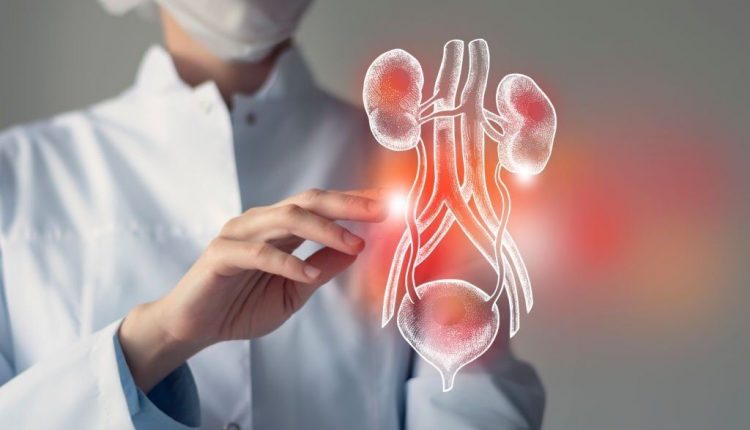
Overactive bladder: symptoms, diagnosis and treatment
Overactive bladder is a common disorder that affects both men and women. It is a condition in which the bladder has an abnormal and involuntary contraction, causing a frequent and urgent need to urinate
Sometimes, this can lead to urinary incontinence, i.e. the involuntary loss of urine.
Overactive bladder can be an annoying and debilitating condition that can interfere with daily life and sleep.
The symptoms of overactive bladder are:
- Urgent and frequent need to urinate, even if the bladder is not full.
- Urinary incontinence, i.e. the involuntary loss of urine.
- Difficulty holding back urine until you reach the toilet.
- Feeling of never being completely empty after urinating.
- Need to get up at night to urinate, interrupting sleep (nocturia).
The causes of overactive bladder can be different
- Sometimes, the disorder may be related to underlying problems such as age, gender and family history.
- Other times, overactive bladder can be caused by other conditions such as:
- Neurological disorders, such as stroke and multiple sclerosis.
- Diabetes.
- Urinary tract infections that can cause symptoms similar to those of overactive bladder.
- Hormonal changes during menopause in women.
- Conditions that affect the bladder, such as tumours or bladder stones.
- Factors that hinder the outflow of urine from the bladder, such as an enlarged prostate, constipation or previous surgery to treat incontinence.
Overactive bladder symptoms may also be associated with:
- Medications that make the body produce a lot of urine or have to be taken with a lot of fluids.
- Excessive consumption of caffeine or alcohol.
- Decline in cognitive functions due to ageing, which can make it more difficult for the bladder to understand the signals it receives from the brain
- Difficulty walking, which can lead to bladder urgency if you cannot reach the toilet quickly.
- Incomplete emptying of the bladder, which can lead to symptoms of overactive bladder, as the storage space for urine is reduced.
- The specific cause of an overactive bladder situation may also be unknown.
Overactive bladder is diagnosed through a series of tests and evaluations
The doctor will start by collecting the patient’s medical history and doing an objective test.
A urine test may be necessary to rule out urinary tract infections.
Other common tests for diagnosing overactive bladder include:
- Uroflowmetry: measures the amount of urine that is excreted during urination and the rate at which it is excreted.
- Full bladder test: measures the capacity of the bladder and the time it takes to empty it completely.
- Urodynamics: assesses the function and behaviour of the bladder during urination.
- Ultrasound: to assess the anatomy of the bladder and urinary system or the presence of bladder stones or other abnormalities.
Treatment and remedies
Treatment of overactive bladder depends on the severity of the symptoms and the underlying causes.
Sometimes, treatment may include a combination of lifestyle changes, medication and medical or surgical treatment.
Lifestyle changes
Remedies for overactive bladder include some simple lifestyle changes that can help manage symptoms.
For example, it is important to drink plenty of fluids to keep urine diluted and reduce the risk of urinary tract infections.
In addition, limiting alcohol and caffeine intake can help reduce the frequency of urge to urinate.
Sometimes, diet control and regular exercise can also help manage symptoms.
Commonly used medications for overactive bladder include:
- Anticholinergics: these drugs work by blocking the transmission of nerve signals that cause the bladder to contract.
- Beta-3 agonists: these drugs act by relaxing the bladder muscles and reducing the frequency of the urge to urinate.
- Intravesical injections of botulinum toxin: this specialist treatment may be useful in selected cases.
In conclusion, overactive bladder is a common disorder that can be bothersome and debilitating.
If you have symptoms of overactive bladder, it is important to talk to your urologist to evaluate treatment options.
With the proper treatment, you can manage your symptoms and improve your quality of life.
Read Also
Emergency Live Even More…Live: Download The New Free App Of Your Newspaper For IOS And Android
The Symptoms, Diagnosis And Treatment Of Bladder Cancer
Cystitis: Symptoms, Causes And Remedies
Cystitis, Antibiotics Are Not Always Necessary: We Discover Non-Antibiotic Prophylaxis
Infections Of The Bladder Mucosa: Cystitis
Colour Changes In The Urine: When To Consult A Doctor
Acute Hepatitis And Kidney Injury Due To Energy Drink Consuption: Case Report
Bladder Cancer: Symptoms And Risk Factors



